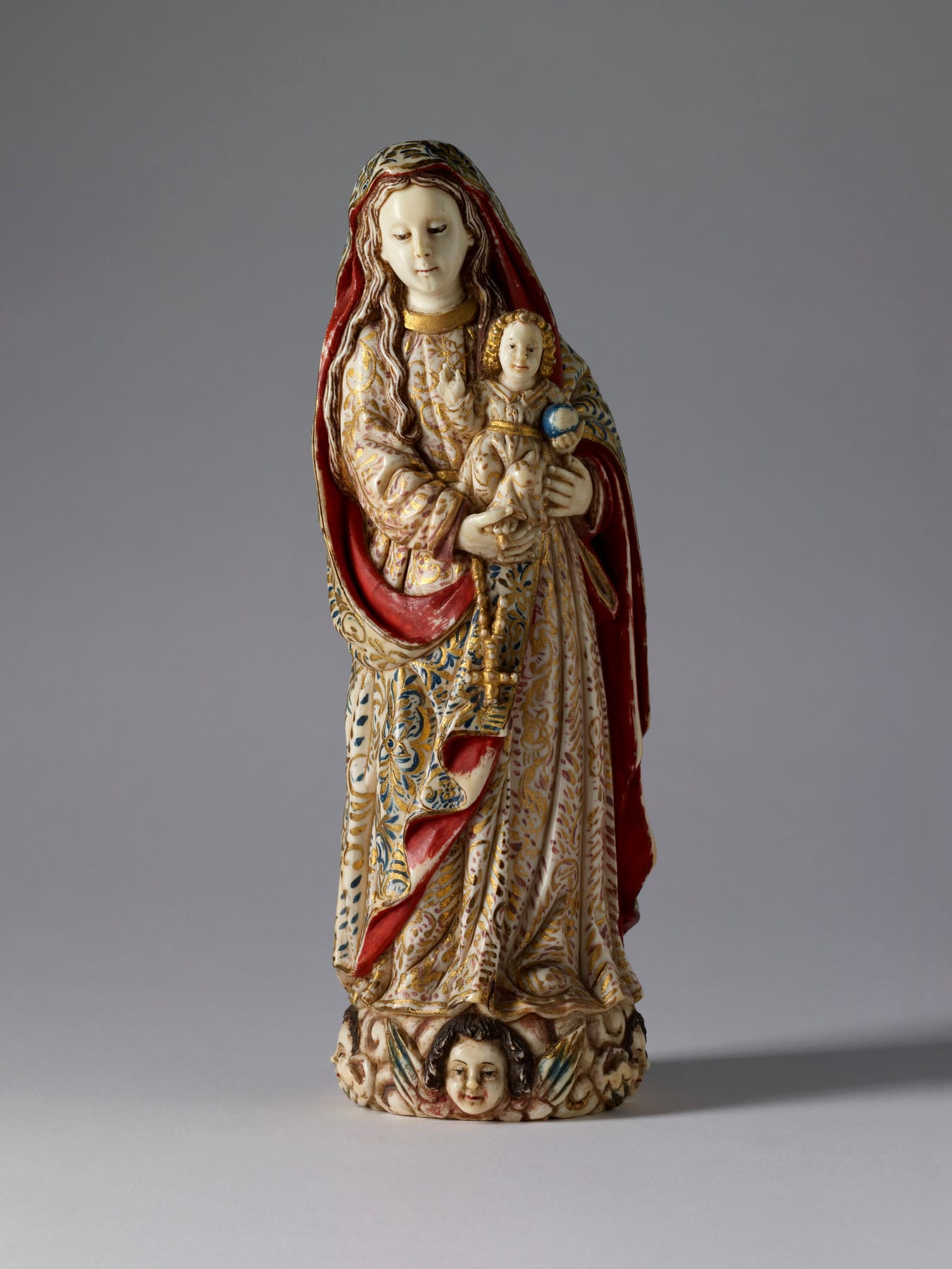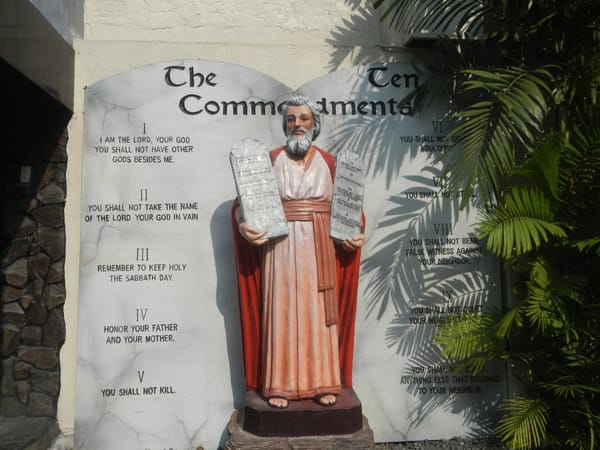The Virgin is supported by cherubim and stylized clouds and supports the Christ Child in her arms. She carries a rosary in her right hand while Christ holds an orb in one hand, signifying sovereignty over the world, raising the other in blessing. The painted decoration, chiefly of the rich clothing (imitating brocade) of the Virgin and Christ Child, is original and would contribute to an impression of the royal status of the mother and child.
This approach to surface decoration, entirely characteristic of ivory devotional statuettes carved in the Philippines in the 1600s, is thought by specialists in the field to reflect the presence in the Philippines of larger-scale devotional sculpture by Martínez Montañés (1568-1649), a sculptor in Seville, Spain's primary port for trade with its world-wide network of colonies. In contrast, the Virgin's face with its heavy-leaded eyes, reflects more closely a sensibility associated with Chinese carving.

Source









